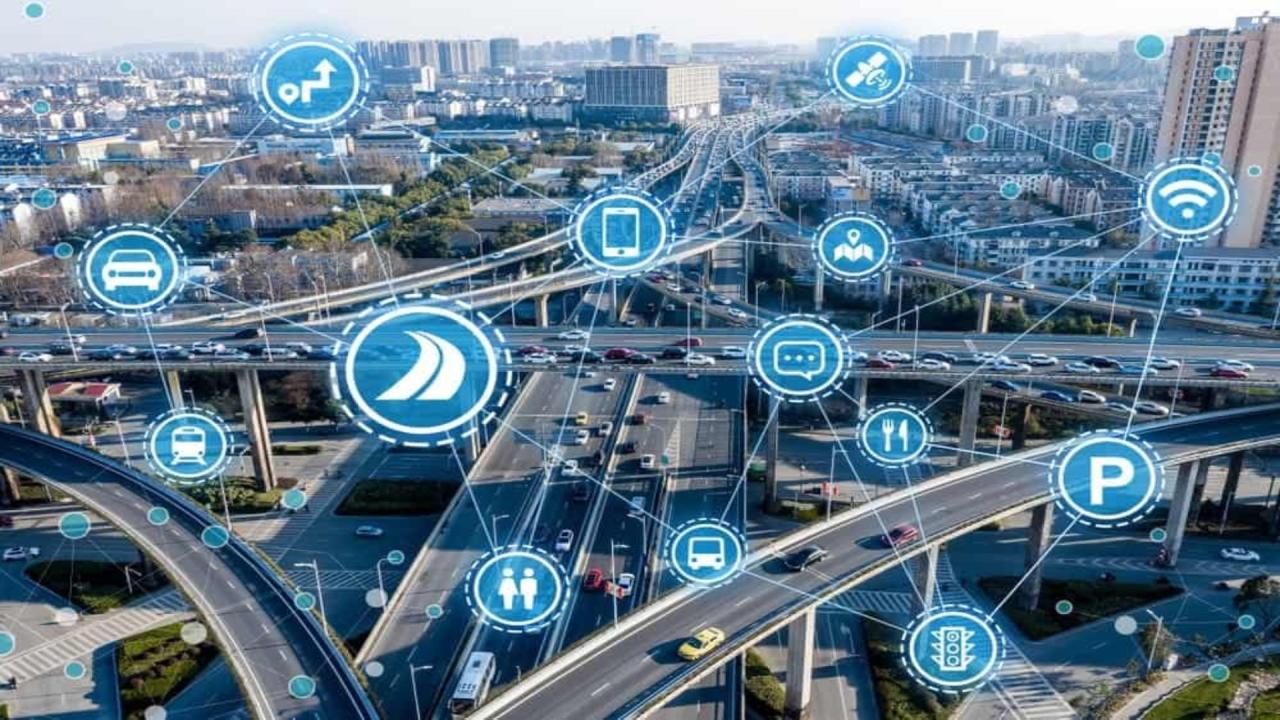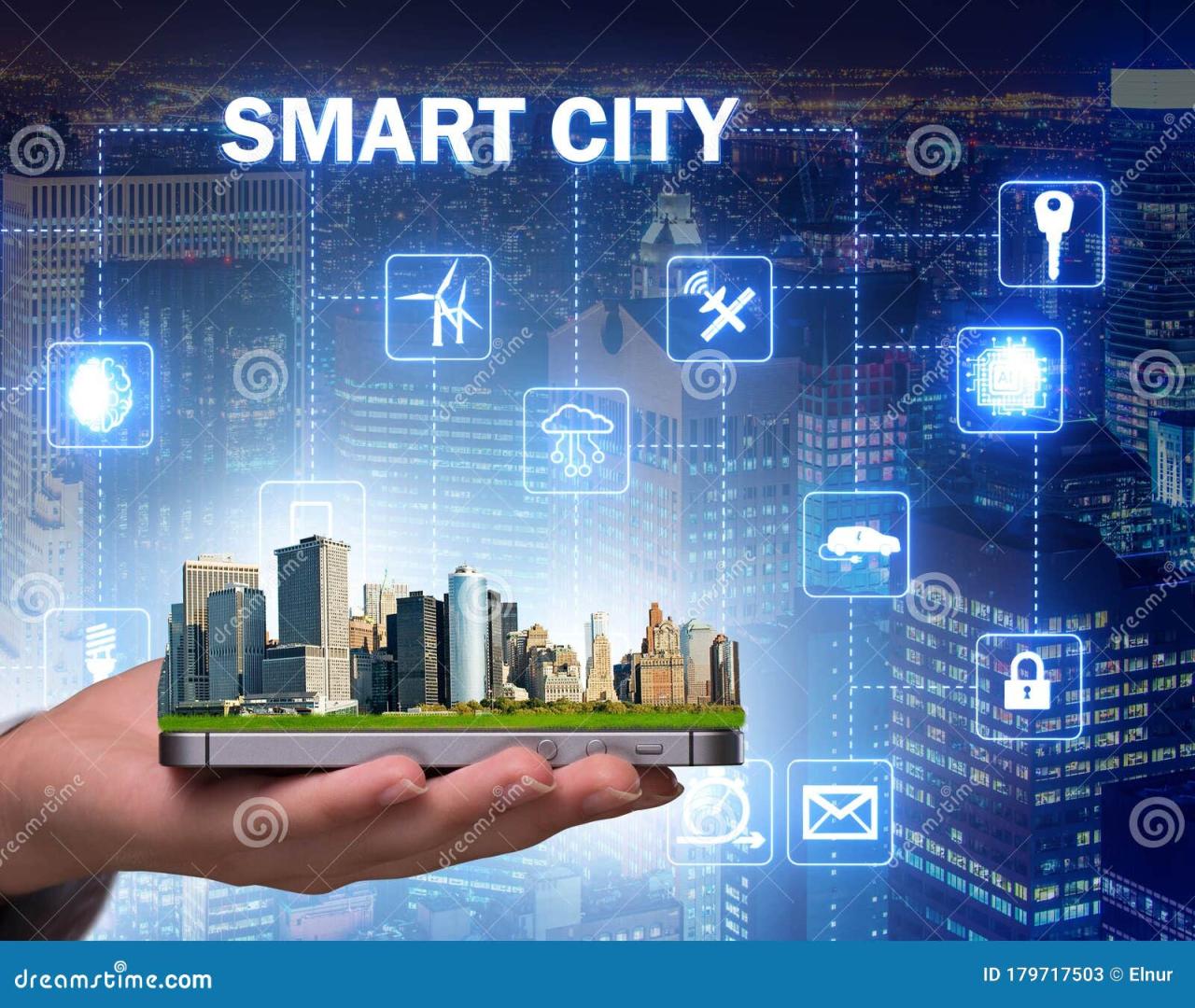With smart transportation systems at the forefront, embark on a journey of innovation and efficiency in the realm of transportation. Explore how technology is reshaping the way we move and connect.
This paragraph dives into the core aspects of smart transportation systems, shedding light on their impact, importance, and objectives.
Overview of Smart Transportation Systems
Smart transportation systems refer to the integration of advanced technologies in transportation infrastructure and vehicles to improve efficiency, safety, and sustainability. These systems have a significant impact on how people and goods move from one place to another, revolutionizing the way we experience transportation.
Integrating technology in transportation is crucial for addressing the challenges faced by traditional systems. By using real-time data, sensors, communication networks, and artificial intelligence, smart transportation systems can optimize traffic flow, reduce congestion, minimize carbon emissions, and enhance overall mobility.
The goals and objectives of smart transportation systems are multifaceted. They aim to increase safety by preventing accidents and reducing fatalities, enhance efficiency by optimizing routes and reducing travel times, promote sustainability by minimizing environmental impact, and improve accessibility for all individuals, regardless of their physical abilities or economic status.
Benefits of Smart Transportation Systems
- Improved traffic flow through real-time data analysis and adaptive signal control systems.
- Enhanced safety through vehicle-to-vehicle communication and collision avoidance technologies.
- Reduced environmental impact by promoting the use of electric vehicles and optimizing fuel consumption.
- Increased accessibility with smart infrastructure designs and inclusive transportation options.
Components of Smart Transportation Systems

Smart transportation systems rely on various components to function efficiently and effectively. These components work together to collect, analyze, and utilize data to improve transportation networks and enhance overall mobility.
IoT Devices
IoT devices play a crucial role in smart transportation systems by providing real-time data on traffic conditions, vehicle locations, and other relevant information. These devices are integrated into vehicles, infrastructure, and other transportation assets to enable seamless communication and data sharing.
Sensors
Sensors are another key component of smart transportation systems, as they help collect data on traffic flow, air quality, road conditions, and more. By deploying sensors strategically throughout the transportation network, authorities can gather valuable insights to optimize traffic management and reduce congestion.
AI Algorithms, Smart transportation systems
AI algorithms are used to analyze the vast amounts of data collected by IoT devices and sensors in smart transportation systems. These algorithms can identify patterns, predict traffic trends, and make real-time decisions to improve the efficiency and safety of transportation networks.
Data Collection and Analysis
Data in smart transportation systems is collected through various sources, including IoT devices, sensors, cameras, and other monitoring tools. This data is then analyzed using AI algorithms to extract valuable insights and inform decision-making processes for optimizing transportation operations.
Communication Networks
Communication networks play a vital role in connecting the various components of smart transportation systems. These networks facilitate the seamless transfer of data between IoT devices, sensors, control centers, and other infrastructure elements, enabling real-time monitoring and management of transportation networks.
Benefits of Smart Transportation Systems

Smart transportation systems offer a wide range of benefits that contribute to creating more efficient, sustainable, and safe transportation networks.
Increased Efficiency in Traffic Management
Smart transportation systems utilize real-time data and advanced technologies to optimize traffic flow, reduce congestion, and improve overall transportation efficiency. By implementing intelligent traffic management solutions, such as adaptive traffic signal control and dynamic routing systems, cities can minimize travel time, fuel consumption, and vehicle emissions. This results in smoother traffic operations, enhanced productivity, and better overall urban mobility.
Reducing Carbon Emissions and Promoting Sustainability
One of the key advantages of smart transportation systems is their ability to reduce carbon emissions and promote environmental sustainability. By encouraging the use of public transportation, carpooling, cycling, and walking through integrated multimodal transportation networks, smart systems help decrease the reliance on single-occupancy vehicles and reduce air pollution. Additionally, the implementation of electric vehicles and infrastructure for alternative fuels further contributes to creating cleaner and greener transportation systems, ultimately mitigating the impact of climate change and improving air quality.
Improved Safety for Drivers and Pedestrians
Smart transportation systems play a crucial role in enhancing safety for both drivers and pedestrians on the road. Through the deployment of intelligent traffic monitoring and management technologies, such as connected vehicle systems, traffic surveillance cameras, and automated emergency response systems, cities can detect and respond to traffic incidents more efficiently. This proactive approach helps prevent accidents, reduce fatalities and injuries, and create a safer transportation environment for all road users. By integrating safety features like pedestrian detection systems, crosswalk alerts, and speed enforcement measures, smart transportation systems prioritize the well-being of individuals and promote a culture of road safety.
Challenges and Limitations
Implementing smart transportation systems comes with its fair share of challenges and limitations that need to be addressed for the successful deployment of these innovative technologies. From infrastructure concerns to data privacy issues, here are some of the key obstacles faced in the realm of smart transportation systems.
Common Challenges
- Lack of interoperability between different smart transportation systems, leading to fragmented networks and inefficiencies.
- Resistance to change from traditional transportation stakeholders who may be hesitant to adopt new technologies.
- High initial investment costs for setting up smart infrastructure and maintaining it over time.
- Limited public awareness and understanding of the benefits of smart transportation systems, hindering widespread acceptance.
Privacy and Security Concerns
- The collection and utilization of personal data in smart transportation systems raise concerns about privacy infringement and data breaches.
- Unauthorized access to sensitive transportation data could lead to potential security threats and vulnerabilities in the system.
- Ensuring compliance with data protection regulations and implementing robust security measures are essential to address these privacy and security risks.
Limitations of Current Technologies
- Current technologies may not be advanced enough to support fully autonomous transportation systems, leading to challenges in achieving complete automation.
- Reliability issues with sensor technologies and communication networks could impact the accuracy and effectiveness of smart transportation systems.
- Integration challenges between existing infrastructure and emerging technologies may pose limitations in the seamless operation of smart transportation systems.
Case Studies and Examples
In the realm of smart transportation systems, several cities and countries have successfully implemented innovative solutions to improve urban mobility and public transportation. These case studies serve as valuable examples of how technology can transform traditional transportation methods for the better.
Singapore
Singapore is renowned for its efficient and sustainable transportation system. The city-state has implemented various smart technologies, such as real-time data analytics, smart traffic lights, and autonomous vehicles. These initiatives have significantly reduced congestion, improved air quality, and enhanced overall mobility for residents and visitors alike.
London, United Kingdom
London has made significant strides in implementing smart transportation systems to address traffic congestion and promote sustainable modes of transport. The city’s congestion pricing scheme, coupled with investments in public transportation infrastructure and cycling networks, has led to a decrease in traffic congestion and emissions. Additionally, the integration of digital payment systems and real-time travel information has enhanced the overall commuter experience.
Barcelona, Spain
Barcelona has emerged as a global leader in smart transportation solutions, leveraging technology to optimize mobility within the city. The implementation of smart parking systems, electric vehicle charging infrastructure, and intelligent traffic management systems has not only reduced traffic congestion but also improved air quality and encouraged the use of sustainable transport modes. Barcelona’s commitment to innovation in transportation has set a benchmark for other cities looking to enhance urban mobility.
Key Takeaways and Lessons Learned
– Integration of real-time data analytics and smart technologies is crucial for improving transportation efficiency.
– Prioritizing sustainable transport modes and investing in public transportation infrastructure can lead to reduced congestion and emissions.
– Collaboration between public and private sectors is essential for the successful implementation of smart transportation systems.
– Continuous innovation and adaptation to changing mobility trends are necessary to meet the evolving needs of urban populations.
Answers to Common Questions
How do smart transportation systems improve safety?
Smart transportation systems enhance safety by implementing real-time monitoring, predictive analytics, and smart traffic management to prevent accidents and promote safer roads.
What are the key components of smart transportation systems?
Key components include IoT devices, sensors, AI algorithms, and communication networks that work together to collect and analyze data for efficient transportation operations.
What challenges are faced in the implementation of smart transportation systems?
Common challenges include infrastructure integration, data security concerns, regulatory hurdles, and the need for public acceptance of new technologies.
How do smart transportation systems contribute to reducing carbon emissions?
By optimizing traffic flow, promoting public transportation, and encouraging eco-friendly modes of travel, smart transportation systems play a crucial role in reducing carbon emissions and promoting sustainability.







